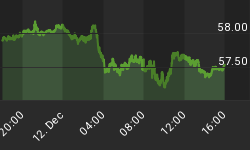The dollar is little changed after the release of FOMC minutes, which shed more detail on the Fed's decision to downgrade its view on growth and housing, but also stepped up its inflation vigilance. The minutes noted that: "Most participants continued to expect that core inflation would slow gradually, but the recent readings on inflation and productivity growth, along with higher energy prices, had increased the odds that inflation would fail to moderate as expected". Such a statement affirms that inflation remains the principal risk to the Fed's economic assessment even as it witnesses the gradual data deterioration of the US economy.
The minutes will help provide some support to the greenback until Thursday's data releases.
At 5am EST, the European Union releases the growth forecasts for the Eurozone growth, which could be notable as far as revisions for 2006 and 2007 growth.
The ECB rate decision is due at 7:45 am EST and is expected to leave rates unchanged at 3.75%. More importantly, the press conference at 8:30 am EST will be highly scrutinized by the market for whether ECB president Trichet will sound off his persistent hawkishness and thereby maintain the door open for a May rate hike. As long as Trichet reiterates that he is "vigilant" on inflation, and interest rates remain low, markets could expect some support for the currency.
AUDCAD: (watch Aussie jobs report at 9:30 pm EST tonight)
Although the Aussie continues near its 17-year highs versus the US dollar, the currency may be already showing signs of peaking in the crosses. With last week's strong data from Canada (jobs and IVEY), and with the Canadian dollar's breaking to fresh 4-month highs vs the USD including breaching the 200-day moving average, the currency has ample upside against the Aussie. Although the Reserve Bank of Australia may be expected to tighten next month (we do not share this assessment), the Aussie may run into some difficulty as early as this evening with the 9:30 am EST release of the March employment report. Employment is expected to have slipped to 15K from 22K while the unemployment rate remaining steady at 4.6%.
Despite soaring uranium prices boosting the Aussie, Australian officials have already started complaining about the strengthening currency impacting exporters. A report showing jobs below 5-10k should weigh on the currency across the board.
Technically, AUDCAD nears its 5-week trend line support at .9405, with further CAD strength seen dragging the pair towards 0.9370s, which is apt to call up the 0.934 support as long as the recent decline oil prices is abated.

EURUSD: Waiting for Trichet
The upward course of EURUSD remains safely in check even in the case of a pullback to as low as 1.3280. The reasons to this assessment are two fold: 1) Fundamentally, the pair is being driven by a powerful trifecta of: i) improved Eurozone domestic demand; (ii) steady ECB tightening campaign and (iii) downside US risks. 2) Technically, the pair has climbed to 2-year highs without any signs of overbought patterns or bearish divergences. Traders continue to deem the pair as fundamentally and technically sound, deeming periodical dips as opportune entry point. With support levels steady at 1.3398 and 1.3370, the pair is equipped to gather fresh momentum towards the 1.3460s.

USDJPY: Pushing the envelope
We have long noted that USDJPY remains the only dollar pair in the green for the greenback due to falling risk averseness and prolonged BoJ cautiousness vis-a-vis the risk or renewed deflation. While the current return to carry trades pales in comparison to that of the past 9 months, we're not seeing the return to the yen carry trades has been especially driven the Bank of Japan's ongoing discomfort with deflation. The new Japanese fiscal year is also encouraging Japanese institutions to invest abroad. We also cannot ignore the unfolding technical picture, which is positive on the daily and weekly charts. Thus, while the 119.50 resistance is the 61.8% retracement of the major decline from the 2007 high to the 2007 low, there remains ample room towards the trend falling trend line resistance, with 119.80 remaining as a viable target. As long as geopolitical and systemic risks (sub prime) remain under wraps, 119.80 remains a high possibility. Downside seen extending to as low as 119.20 and 118.65, especially amid the onset of further protectionist rhetoric from Washington towards China, which is not expected to end any time soon.

















